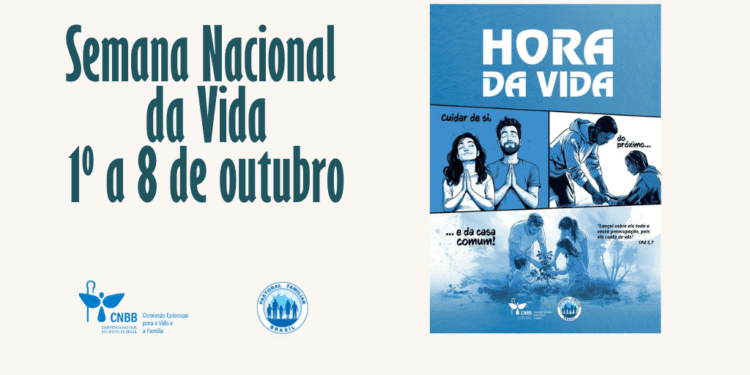To an older generation, he was Dracula — the quintessential monster, a figure of terror and attraction, combining the aristocratic bearing of Bela Lugosi’s Count with a more physically imposing, vigorous presence and an overt aura of sexual menace.
To young viewers today, he is a sinister white-haired wizard in two of Hollywood’s greatest fantasy franchises — Count Dooku in the “Star Wars” prequels and Saruman the White in Peter Jackson’s “Lord of the Rings” and “Hobbit” films.
Sir Christopher Lee, who died on June 7 at the age of 93, had an extraordinary career and an extraordinary life. While it’s impossible to sum up his incredibly prolific and varied film output — IMDb.com credits him with more than 280 acting roles over a nearly 70-year career — Lee’s lean, towering build (he stood five inches over six feet) and sonorous baritone voice were well-suited to playing villains and monsters. In addition to Dracula, Saruman, and Count Dooku, other villainous roles included Lucifer, Death, Frankenstein’s monster, and the title villain in the 007 film, “The Man with the Golden Gun.”
Although he spent much of his later career distancing himself from the horror genre, he worked for 20 years with England’s Hammer Films, starting with his breakout roles in “The Curse of Frankenstein” (1957) and “Dracula” (1958, also known in the US as “Horror of Dracula”). He reprised the latter role in half a dozen Hammer films and two non-Hammer films (including a French language production, French being one of the five languages he spoke fluently).
Both of those early Hammer films were directed by prolific Hammer filmmaker Terence Fisher, who reinvented horror with a blend of full-color bloody violence, sexual overtones, and religious themes. Fisher was a high-church Anglican who considered his films “basically morality plays” reflecting his belief in “the ultimate victory of good over evil.”
Lee, who identified as Anglo-Catholic, shared this perspective. (Lee’s father, a lieutenant colonel in the British Army, was Anglican; his mother, an Italian countess, was Catholic.) The destruction of evil in Fisher’s films, Lee once noted, was the reason “the Church doesn’t object to these films, and why they are so popular in Ireland, Spain, and Italy.”
It was Fisher and Lee’s “Dracula” that established the cinematic convention of the cross’s supernatural power over evil. Universal’s 1931 “Dracula” starring Bela Lugosi did briefly depict the vampire’s aversion to crosses described in Bram Stoker’s novel, but in this depiction the cross is merely a deterrent like wolfsbane (which plays a bigger role in the film).
The 1958 film weaponized the cross, making it like kryptonite to paranormal evil. The cross literally burns vampiric flesh, much like sunlight. (The destructive power of sunlight over vampires was introduced by “Nosferatu,” F. W. Murnau’s unauthorized 1922 silent adaptation of “Dracula” — a film that, despite omitting the role of religious iconography in the vampire mythos, was included in the 1995 Vatican film list.)
In part due to his close identification with the horror genre, Lee was reputed to be obsessed with the occult, and rumors of his massive occult library (12,000 to 20,000 volumes, depending on the source) have been stated as fact in news stories — though Lee himself debunked this notion.
“I don’t have a huge collection … I have maybe four or five [occult books],” he told an audience at University College Dublin in 2011. “And I have met people who claimed to be Satanists, who claimed to be involved with black magic … But as I said, I certainly haven’t been involved.” Concluding with an exhortation against occult involvement, he added, “And I warn all of you — never, never, never. You will not only lose your mind, you’ll lose your soul.”
Lee’s antipathy toward the occult was most dramatically realized in a passion project that he fought for years to get made at Hammer, which wound up becoming Terence Fisher’s best film and the clearest and most explicit expression of his moral and theological vision: “The Devil Rides Out” (1968, also known in the US as “The Devil’s Bride”).
It was also one of Lee’s few heroic roles. As Nicolas, the Duc de Richleau, Lee played a Van Helsing-ish protagonist, a man of faith and reason who utilizes crosses, holy water, and the sacred name of Jesus to battle a satanic cult for the souls of a number of its members. This film was a passion project for Lee, who was deeply dissatisfied with the increasingly poor Dracula series and wanted to portray the dangers of the occult in a morally serious way.
“After years of urging black-magic themes on Hammer, I had a breakthrough with ‘The Devil Rides Out,’” he wrote in his autobiography. “Conservative Hammer had always worried about the Church’s reaction to the screening of the Black Mass. But we thought the charge of blasphemy would not stick if we did the thing with due attention to scholarship.”
“The Devil Rides Out” marked the climax of a cinematic era. Five years later, Lee appeared in a very different sort of horror film, “The Wicker Man” (1973), one tonally and atmospherically antithetical to the Gothic Christian horror of Lee’s Hammer films, but which put a protagonist who would have felt more at home in a Hammer horror film to a post-Christian test he couldn’t understand or cope with.
Bright and unsettlingly buoyant, suffused with amiable folk music and guiltless eroticism, “The Wicker Man” depicts a cheerfully carnal Celtic neopagan cult among whom the protagonist, a stodgy Christian policeman, flounders haplessly as he tries to solve a purported murder case, not realizing that he is walking into a trap. Lee plays the cult leader, Lord Summerisle, who informs the protagonist that his God is dead: “He can’t complain. He had His chance, and, in the modern parlance, He blew it.”
“It’s the story of two beliefs,” Lee said of the film in a 2001 interview. “One is organized religion, and the other is the old belief that we must revere nature and appease it if necessary. Its power lies in the fact that you never expect what eventually happens, because everyone is so nice.” Niceness, then, is no sure mark of decency or goodness; nor does the protagonist’s prickly judgmentalism necessarily discredit his basic religious commitments.
Many years later, when pre-production for “The Lord of the Rings” was underway, Lee made a bid for the role of Gandalf, sending Peter Jackson a photo of himself in wizard regalia. A huge Tolkien fan who reread the books every year, Lee had even met Tolkien himself once at the Eagle and Child, the Oxford pub where Tolkien, CS Lewis, and the other “Inklings” met. (He also met TH White, whose “Once and Future King” was an important influence on “Star Wars,” along with “The Lord of the Rings.”)
But Jackson wanted Ian McKellen for Gandalf; in any case, Lee, once an athletic performer and a skilled fencer who would go on to battle Yoda with light sabers in the second “Star Wars” prequel, probably wasn’t up to the physicality of the role of Gandalf. So Lee added to his repertoire one more iconic villain (in a story that, like his Fisher films, has Christian roots).
It’s possible that Lee had more death scenes than any other film actor who ever lived. In his first iconic role, though, he repeatedly came back from the dead, and a certain aura of immortality clung to him from that role. “It would be pretty awesome if Christopher Lee rose from the grave right about now,” a friend joked sadly on Twitter. Christian faith, of course, tells us that Christopher Lee will rise from the grave, as will we all … and it will be awesome. Until then, Christopher Lee, requiescat in pace.
Most of Christopher Lee’s more notable films are readily available on home video. A glaring exception is “The Devil Rides Out,” currently out of print on Region 1 (North America) DVD. It is available used from various online vendors and may be available at libraries.















